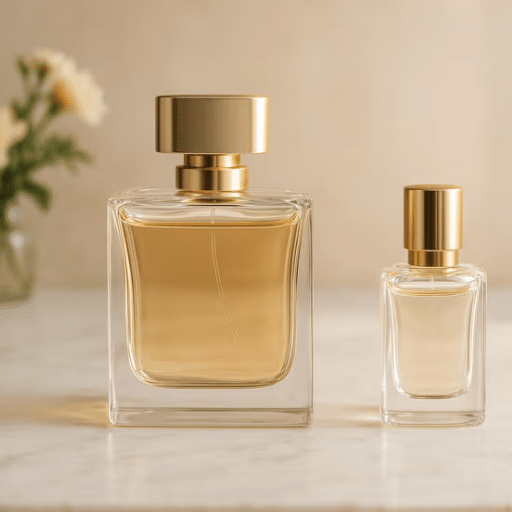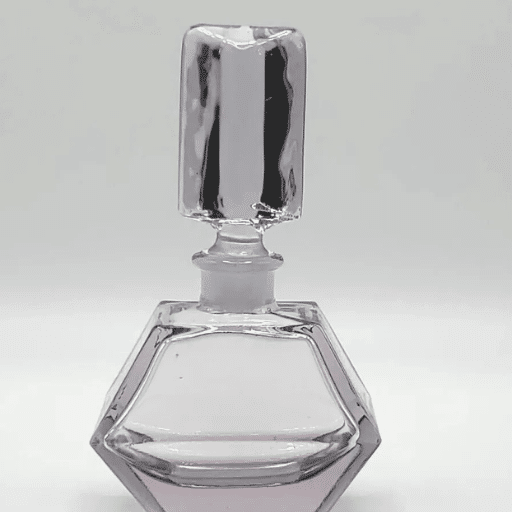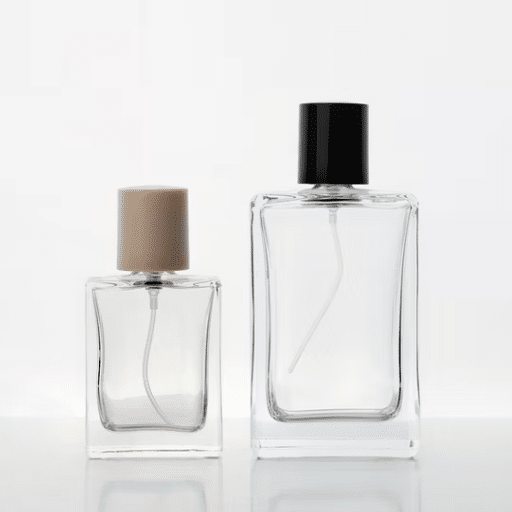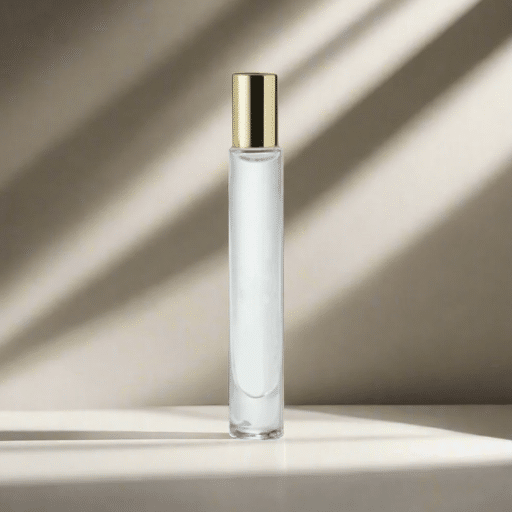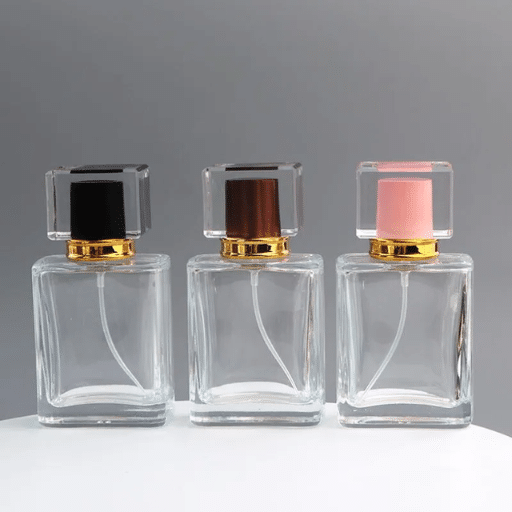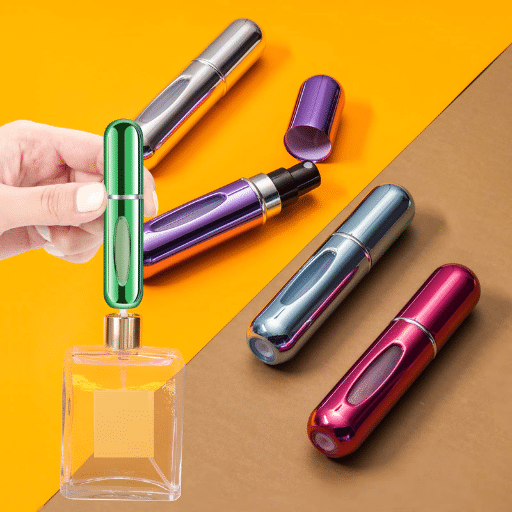In the case of fragrance, the smell is just one of the factors that make it so attractive. The container plays as much of a role in the luxurious and unforgettable experience as the scent. The bottle’s decoration is usually done in a way that greatly helps transform the plain container into a piece of art. In this blog post, we delve into the three most common and pioneering decorator techniques — screen printing, etching, and hot stamping. Whether you are interested in the skill behind these methods or in need of ideas on how brands create their remarkable bottles designs, this guide will motivate and educate you. Prepare to see the creativity and hard work that goes into creating perfume bottle turning masterpieces.
Introduction to Perfume Bottle Decoration
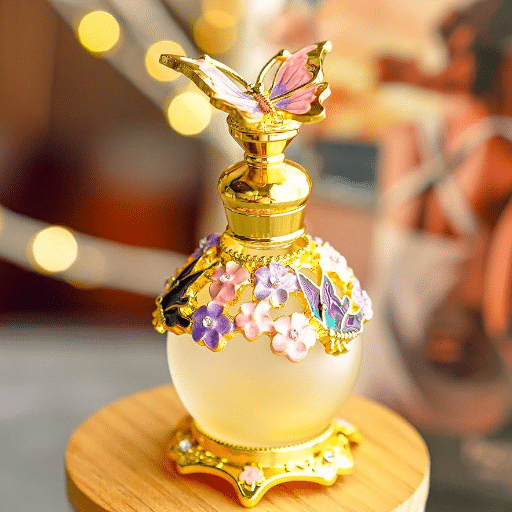
The decoration of perfume bottles is an innovative and technological mix dedicated to transforming the bottle into a piece of art and a source of attraction. Techniques such as screen printing offer the advantage of creating designs directly on the central surface of the bottle, which is bold enough and easily noticeable. Etching gives the glass textured patterns created by the removal of its surface, hence, a premium and beautiful look. On the contrary, hot stamping applies gold and silver foil to the package, making the perfume bottle appear luxurious. So, metal accents take the product to a higher level of desired brand and consumer luxury. At the same time, these methods not only reflect individual identity but also channel their values to the end consumer, leaving a mark.
Importance of Packaging in the Fragrance Industry
Packaging is crucial in the fragrance industry and represents the first moment a product touches the consumer. The primary role of packaging is not only to protect the delicate contents but also to promote the brand through its story, values, and dreams. A well-designed bottle is not just an eye-catcher but also a source of emotions, luxury, and a product out of the crowd. The environmental sustainability and eco-packaging trends are also instrumental in changing the buying habits of consumers, with more companies adopting biodegradable materials or refillable packaging in response to environmental concerns. Besides, the progress of technology has introduced many possibilities in packaging, which, apart from enhancing customer engagement through smart packaging and augmented reality, also plays a role in this development. In the end, it is not only the fragrance contained in the packaging but also the packaging itself that is one of the deciding factors in the consumers’ buying and the brands’ customer loyalty formation process.
Overview of Decoration Techniques
| Decoration Technique | Description | Advantages |
|---|---|---|
| Screen Printing | Ink applied through mesh screen stencils | Durable and high-quality finish |
| Hot Stamping | Heat-pressed foil transfer onto surface | Luxurious appearance |
| Embossing | Raised designs on packaging material | Tactile and premium feel |
| Digital Printing | Direct printing of digital designs | Customization and quick production |
| UV Coating | Glossy or matte coating applied with UV light | Enhances durability and visual appeal |
| Labeling | Adhesive labels with printed designs | Cost-effective and versatile |
| Spray Coating | Layers of paint or finishes sprayed on surface | Provides smooth, even coverage |
| Laser Engraving | Precise engraving using laser technology | Elegant and permanent design |
| Heat Transfer | Design transferred via heat onto material | Detailed and vibrant color results |
| Pad Printing | Ink transferred via silicone pad | Great for curved or irregular surfaces |
Choosing the Right Technique for Your Brand
Selection of the perfect product enhancement technique that enhances your brand demands a thorough examination of various factors to guarantee it will satisfy your product goals as well as the perceptions of the audience. The first thing to do is to rate the product’s material. Laser engraving, for example, is one excellent method to use on metals and glass, but heat transfer or pad printing might be more appropriate for fabric or plastic. The second step is to determine the desired visual impact and quality. For complex designs, heat transfer and pad printing give bright and detailed results, but laser engraving offers a sleek and permanent finish. Besides that, the emphasis should also be put on the production of volume and the cost of efficiency of the production. Techniques such as adhesive labels and spray coating are generally more cost-effective for a large number of projects. If you follow this evaluation, you can better choose the technique that completely mirrors the identity of your brand and, at the same time, meets the customers’ needs.
Screen Printing on Glass Perfume Bottles
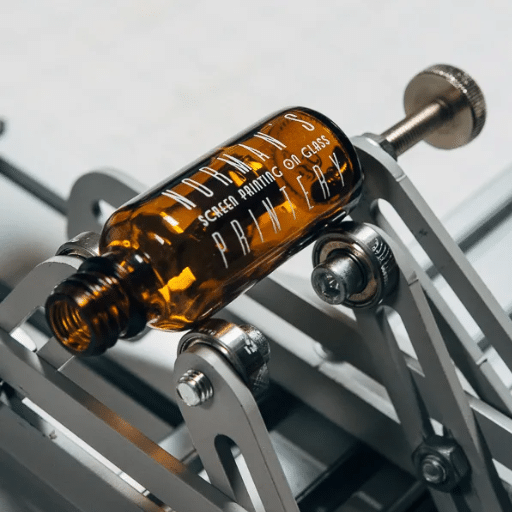
Screen printing on glass perfume bottles is often heard of as a way to decorate and brand, particularly due to the high-quality and long-lasting results it automatically provides. The complete process here consists of casting the image on the glass by a fabulous mesh stencil, giving the finished image or text as crisp and lively as the artist intended. The whole approach is for large and bold artworks and text, and not for those with much detail, which makes it a perfect fit for the logo. The use of screen printing inks specifically made for glass, along with a contamination-free surface of the bottle before printing, is essential to achieve the perfect result. This technique is the most appropriate for the print runs of medium to large quantities, where product uniformity and a luxury look are the primary concerns.
The Screen Printing Process Explained
The method of screen printing is admired for being both diverse and accurate, and it is frequently chosen by decorators who intend to impart a beauty to their works such as glass bottles, in this essay we are going to tackle and enlighten the reason why screen printing process is fascinating. To start with, a stencil must be created, and this article is also known as a screen. The fabric of the mesh used for the preparation of the stencil is fine and is painted with a light-sensitive emulsion. After the emulsion is completely dry, the screen with a light-sensitive emulsion is put through a template that has the desired design. This way, when the screen is exposed to light, the design area hardens, while the unnecessary areas remain unexposed and can be washed away.
Glass bottle decoration is hard work, and hence one needs to be extra careful when using screen printing to do so. We are all very well aware that drinking goods could be hazardous if the decoration’s ink is not food grade, and children’s stuff could be sweated off at high temperatures in dishwashers. The conventional inks commonly evaporate poisonous substances when they are burnt. Without a doubt, people who are into screen printing on glass need to be very insightful, even in such small details.
The bottles, post-ink application, go through a high-temperature oven to be cured, resulting in the firm bonding of the design to the surface. This process is very advantageous to the print as it makes the print almost as strong as the surface and highly resistant to wear, ensuring long-lasting use even when handling and washing are involved, without the print experiencing any distortions. With the ongoing technological evolution of screen printing, the printing process has been drastically shortened. At the same time, its quality has been raised, therefore becoming the ideal method for branding and customization in sectors like drink packaging.
Advantages of Screen Printing for Custom Perfume Bottles
Durability
The screen-printed designs are extremely long-lasting as the curing method is used to make the ink firmly adhere to the glass surface. Such a print gives no chance for scratches, smudging, and fading, even with continued usage and frequent cleaning. The durability of the prints ensures that the vibrant colors of the designs do not fade and remain intact until the end of the product’s life cycle.
High-Quality Finish
Screen printing is also very cost-effective and yields a unique and vivid look with sharp lines and extreme colors. This excellent quality printed glass gives a custom perfume bottle a completely different identity that is both appealing and striking.
Versatility of Design
This printing method is capable of producing detailed and elaborate designs, as well as simple ones, with bright and solid colors. The printing technique allows the use of metallic and special inks, such as gold, silver, or frosted ones, thus offering a lot of creative freedom for logos and personalization.
Cost-Effectiveness in Bulk Production
If you are manufacturing in large quantities, screen printing is the way to go for a cost-effective solution. The premium cost attributed to setting up the process is directly proportional to the increased production, making it more economical for the production part of the order.
Longevity of Branding
The flask or bottle can be given a full-screen print job because no part of the design can be peeled off or detached. This ensures one will still enjoy the quality of branding, which will, in fact, lead to a brand image objective of being the best and widely recognized.
Eco-Friendly Options
Environmentally friendly inks have become a standard part of screen printing, as well as sustainable materials. Consumers who prefer eco-friendly methods and companies previously labeled as polluters all fall under this group, which finds the new production method essential.
Design Considerations for Effective Screen Printing
In the case of effective screen printing, it is crucial to focus on specific design considerations that will ensure the best results. To start with, it is essential to have high-quality art with a resolution of at least 300 DPI, which is necessary for sharp and detailed prints. It is highly suggested to use vector graphics since they maintain quality, whether scaled up or down. The choice of colors is another essential factor to consider. The preference for bright and contrasting colors might be the best option if the intention is for the design to stand out and be visible on different surfaces. Hence, the substrate material should also be considered very carefully. There could be specific ink types or treatments on glass, metal, and plastic surfaces to obtain the best possible adhesion and durability. Finally, through sustainability, the design can be a part of it by using eco-friendly inks that can be a selling point to the target market who are environmentally conscious, and, at the same time, keeping the production in line with the most modern approach. By observing these points, companies can achieve impressive, professional, and long-lasting results for their screen-printed designs.
Pad Printing: A Versatile Decoration Method
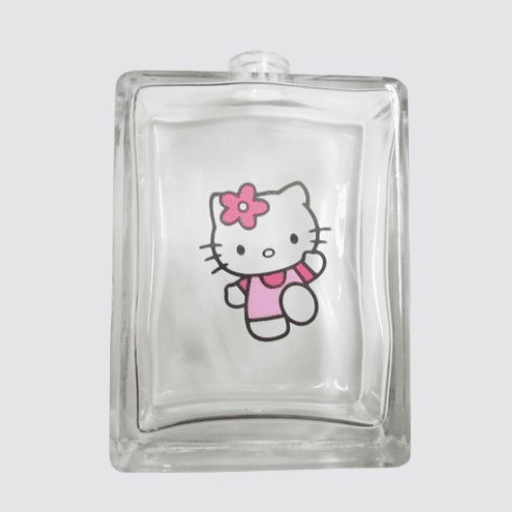
Pad printing is a very popular and multifunctional way of decorating different objects with uncommon shapes or surfaces that are very smooth. The technique involves transferring ink from the stamped silicone onto the object, ensuring the highest precision and even color application on curved or textured surfaces. This method is primarily applied to materials such as plastics, metals, ceramics, and glass, making it popular in the markets of collectibles, electronics, and the pharmaceutical industry. The pad printing process is universally known for being very reliable and efficient in achieving high-quality graphic results.
How Pad Printing Works
The printing of pads works on a very unique principle. Technologically advanced machinery and highly skilled art are two factors contributing to the result, which is very accurate and of high quality. The very first step of the process is to make the printing plate with an etch that is usually made of steel or polymer. This plate is then inked, and the standard practice is to clean it by wiping off the excess ink. The silicon pad, with its stretchiness and high level of detail, stamps down on the inked plate, transferring the design along with itself. The pad is later on very gently touched to the item, and the picture is transferred. The whole process guarantees the detail and nature of every component of the designs, whether they are hidden or out of the ordinary. One significant breakthrough in pad printing is its ability to faithfully replicate complex patterns, ensuring they are practically identical when printed on surfaces that are either uneven or not flat. Advancing technology in pad printing has contributed to improved efficiency as well as quality. Many things, such as the form of ink used, the process itself as it is automated, and the tool for precision calibrations, are areas where technology has brought change. Therefore, these days, pad printing can speed up production, extend the life of printed designs, and work on a far wider variety of materials and shapes.
Benefits of Pad Printing for Perfume Packaging
Enhanced Design Precision
Pad printing is an excellent method that can help beautify the perfume bottle with tiny and intricate designs. Such a start ensures that the most creative elements, like identification marks, typography, and ornamented drawings, maintain the same standardization across all items, making the product even more attractive.
Versatility with Shapes and Materials
The packaging for perfumes usually includes scarce, aesthetically shaped bottles made of various materials such as glass, plastic, or metal. Pad printing is a versatile and practical way to address problems, as it can cover and color any curved, non-flat, or textured object, producing output of the same quality as conventional methods.
Durable and Long-Lasting Prints
The new world of ink technology at our disposal ensures that a printed design will never show fading, smudging, or wear over time. Perfume bottles, among others, are frequently moved and come into contact with various environments, making them the most complex products. However, if their prints incorporate innovations in this sector, they will remain unchanged and new-looking for a very long time.
Customization and Branding
The pad printing process is one of the most commonly used methods for customizing different designs for brands’ various product lines or as limited editions. The real reason for such printing is its flexibility, which also results in the Company’s trademark: the exclusive and catchy packaging that is a favorite among the company’s customers.
Eco-Friendly Ink Options
Nowadays, the new pad printing technology can transfer images with the help of environmentally friendly inks that comply with eco-friendly and safety standards. This is a sublime feature for brands likely striving to minimize their carbon footprints while insisting on high-quality prints.
High Production Efficiency
Pad printing machines have the capacity to handle mass production due to their incredible speed and high degree of harmonization. A good example of such a system is our modern aqueous pad printers. These small-sized printers allow you to keep production costs low and meet market launch timing by automating the process.
Applications of Pad Printing
Electronics
Pad printing is widely used and consulted for marking electronic components, such as circuit boards, membrane switches, and other devices. The methodology allows for printing on non-flat surfaces, which often requires exact and detailed work for small and intricate designs.
Medical Devices
In the health sector, pad printing is the acknowledged way of marking medical instruments, surgical tools, and syringes. The process not only complies with strict sanitary requirements but also maintains the highest standard of accuracy, making it widely known in this field as the most reliable method.
Automotive Industry
Mug printing will always have a large share of the automobile industry thanks to how substantially it matches up with the industry’s requirement for durable and high-quality finishing. Pad printing is the method that can most definitely be linked to handling the very irregular, curved, and textured surfaces that are representative of many automotive components.
Promotional Products
When you need to customize promotional items like pens, keychains, mugs, and USB drives, the best and selected approach will be pad printing. The high-volume production efficiency of this method is the main reason it is beneficial for marketing campaigns.
Consumer Goods
“Pad printing on certain parts of the item” is the method used for printing texts on certain selected parts of the object itself or on certain selected parts of the article without using any additional parts. This is definitely a step beyond branding/labeling, which is done through the use of special colors and printing methods on the packaging, yet it remains cheaper and necessary.
Sporting Equipment
Tags, numbers, and other information are frequently pad-printed on sports gear like helmets, balls, and rackets because this method provides bright and lasting prints.
Hot Stamping: Adding Luxury to Perfume Bottles
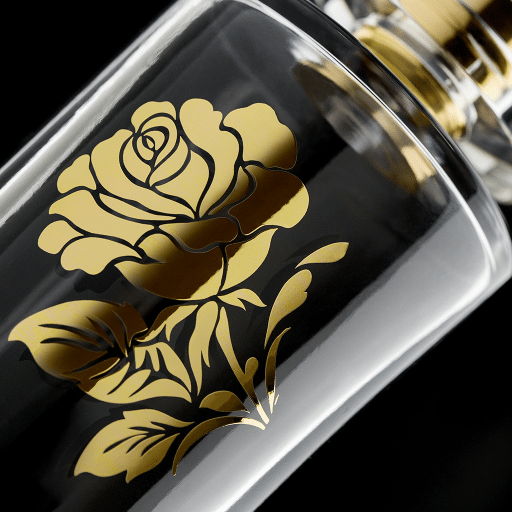
One of the most effective ways to improve the attractiveness and luxuriousness of perfume bottles is by using a hot stamping process. The application involves the use of heat, pressure, and foils to carry out the transfer of metallic or pigmented designs to the surface of the bottle, thus giving it a premium visual appeal that would draw in customers. The method offers several advantages, such as creating sharp and polished finishes, which include the use of metallic and glossy accents and enhancements in the product’s visual appearance. Besides all these benefits, hot stamping is also said to be highly impact-resistant, so the design would not fade even if the bottle is handled regularly. Moreover, this method’s ability to make the product stand out through branding and add subtle details is why it remains the ultimate choice for the perceived high value of the fragrance.
The Hot Stamping Process
Hot stamping goes through a series of steps that reconcile science with artistry to create remarkable designs. The first step is to have the metal die perfected by incorporating the pattern or the company’s logo into it. Then the die will be heated to such a temperature that it becomes a pressing tool to be very carefully hammered into the material to be printed. However, this does not happen in just a snap, in a fraction of a second. It is a time-consuming operation where everything must be delicately and precisely started, ended, and controlled to be successful.
Contemporary hot stamping technology developments allow for intricate detailing and production efficiency that exceed previous thresholds. There are amazing machines these days that can stamp even the most complicated patterns with absolute accuracy, allowing designers to experiment extensively while maintaining uniformity for the mass market. In addition, eco-friendly materials are provided with sustainable foils, making the process more environmentally conscious and furthering the connection between the technology and the trends. Although hot stamping beautifully combines elegance and reliability, it is still the method most favored for premium packaging and high-end product finishes.
Advantages of Hot Stamping for Branding
Premium Aesthetic Appeal
Hot stamping is a technology that provides a high-quality, metallic finish that improves the visual attractiveness of packages and products. Moreover, printed designs created with hot stamping are vibrant, reflective, and become the ultimate prominent print on the shelf, giving both the feeling of luxury and high quality at the same time. Research has found that as much as 72% of people believe that metallic coating signals a luxury product, making hot stamping a wise choice for branding even in the most competitive markets.
Durability and Longevity
Luxurious look with the metallic finish during hot stamping not only shows up in the design of the packaging or the product itself, but it also goes along with the tactile touch of the printed part. This hot stamping effect is so intelligent that it guides the consumer to buy a more expensive product or a superior brand. And the other good news is that the costs of the metallic finishes are not high at all. No wonder many brands are using metallic finishes as their signature elements.
Customizable and Versatile
Hot stamping allows for a good range of customization. This will help brands create bolder and more confident logos, as well as detailed and lovely patterns. It can be used for multiple materials such as paper, cardboard, plastics, leather, and textiles, serving many industries simultaneously. Branding and aesthetic things can be worked out by playing with foils, patterns, and the texture to achieve a high level of differentiation.
Eco-Friendly Options
Hot stamping, using eco-friendly foils and materials, has transformed the industry. The option of using eco-friendly materials was a massive hit, as it was a great move to be sustainable without compromising product quality and overall look. The research concludes that the majority of purchasers, 81%, are now more likely to buy goods that come with the sustainability claim.
Enhances Perceived Value
Luxury skin care products featuring hot-stamped brand logos are directly associated with profit from higher retail prices. The glow that accompanies professionalism is still present, enhancing the brand’s credibility and making consumers more likely to trust it. It is indicated that luxury packaging can increase the customer’s willingness to pay for a given product by as much as 80%.
Supports Anti-Counterfeiting Efforts
Adding hot-stamping elements in addition to holographic or tamper-evident features can be a great solution to fraud. Specifically, high-end and expensive items need to have such security features to preserve brand value and customer loyalty.
Choosing Foils and Inks for Hot Stamping
Choosing the right materials, specifically the foils and inks, for hot stamping is vital to achieve a finish that is both professionally done and visually appealing. Foils come in various colors, finishes, and materials, including metallic, gloss, matte, holographic, and more, offering a wide range of options. Just take metallic foils, they are very much preferred in the case of luxury goods because they bring in a great deal of finesse and class. But go the other way with matte foils, and you get a slightly modern look that’s very fitting for less. Ink must be on the same path as the substrate material and the foils; otherwise, the print won’t look good or even stick. Ink should also be polymerizable to give the bonded material an even, coherent strength. Also, the use of environmentally friendly inks has increased as environmental concerns persist and companies go green with their production and packaging. The right balance of these different elements not only leads to a pleasing aesthetic but also to functional durability of the final product.
Etching and Engraving Techniques
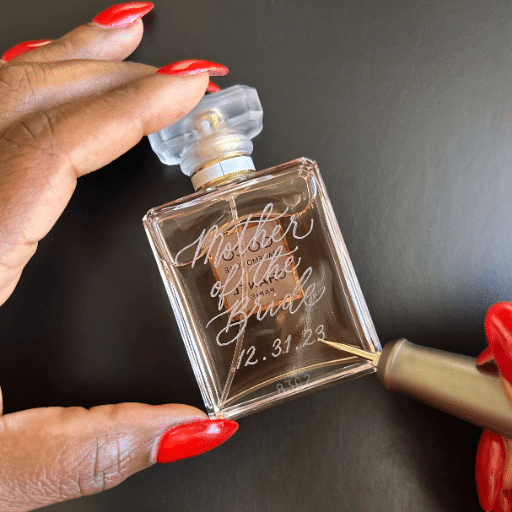
Methods like etching and engraving are selected to create accurate and long-lasting designs on a lot of different materials. Etching uses chemicals such as acids to remove the material and make detailed designs, so it is the best choice for intricate or precise patterns. Contrary to etching, engraving is a mechanical process in which the material is cut by a tool, resulting in very long-wearing and sharp designs. Whatever the means of execution, they are all employed in vast areas, such as decorative art, industrial labeling, and personalized product manufacturing. The choice between them depends on the material being handled and the detail required.
Understanding Etching and Its Applications
Etching is a traditional technique that has been employed and still serves as a major player in many industries, where it unites the fine arts and the industry. The process involves using substances, typically chemicals like acids or mordants, to erode the surface of the chosen material, such as metal, glass, and even ceramics. This way, one can work out very detailed patterns and designs that are difficult, if not impossible, to realize by other methods. The improvement in technology is another factor that has made it possible for this technique to be used at a master’s level, e.g., in electronics, aerospace, and the medical device industries. Besides, the etching methods now employed can be done quickly and surely, and they can be produced on demand for a period, such as a year, assuming the same production means are maintained throughout.
Benefits of Engraving for Durable Markings
Exceptional Durability
Engraved markings do not wear away quickly, even in harsh weather conditions, such as high temperatures, dampness, or rubbing. This characteristic makes engraving well-suited for industrial domains, outdoor uses, and items that have long-term physical degeneration.
High Precision and Clarity
The available modern engraving methods, for example, laser engraving, guarantee neat and accurate imprints. It is all the more crucial for miniature pictures, barcodes, or item coding, where the imprints need to be readable. Laser engraving’s precision and quality have been proven by research. It currently has an accuracy level of ±0.001 inches, which is why it is avoided by those who are scrupulous about the quality of their work.
Versatile Material Compatibility
Engraving easily adorns different types of materials, ranging from metals to plastics, glass, and wood. One example of the use of engraving is in the aerospace industry, where metal components are usually marked with engraving. In the luxury sector, it is used for decorating goods such as jewelry and watches.
Tamper-Resistance and Security
Facets of engraving include marks and resistances to repulsion, wherein identities, key machine elements, and authentication elements are better protected. These are similar applications associated with laser marking foils. It is necessary for risk reduction due to failures in the medical devices and electronics industries.
Cost-Effectiveness for Long-Term Use
Setting up the initial investment in the required engraving equipment might be a bit more expensive than other methods, but the long-term benefits make it sensible. Marks that have been engraved rarely require maintenance or replacement, so a lower budget should be allocated for the entire manufacturing and asset management processes.
Eco-Friendly Process
In today’s world, especially with laser engraving methods, almost no waste is produced, unlike with chemical etching or ink printing. It is a selection that is not harmful to nature in a situation with the limited availability of this type of industrial material or artifacts that can be recycled, and any or all of the production-related processes are already developed.
Comparing Etching and Engraving for Perfume Bottles
| Key Point | Etching | Engraving |
|---|---|---|
| Definition | Uses chemicals or acids for surface design. | Uses tools or lasers to carve into the surface. |
| Durability | Prone to fading over time. | Permanent and long-lasting results. |
| Detail Precision | Offers intricate, fine designs. | Supports both fine and bold designs. |
| Materials Compatibility | Best on glass or metals. | Works on glass, metals, wood, or ceramics. |
| Environmental Impact | Often involves chemical waste. | Minimal waste, eco-friendly methods available. |
| Cost | Generally less expensive initially. | Higher upfront cost, long-term economical. |
| Maintenance | May require periodic touch-ups. | Virtually maintenance-free over time. |
| Production Speed | Relatively fast process time. | Slightly slower, depending on laser or tool usage. |
| Aesthetic Appeal | Smooth and polished appearance. | Provides a textured or deep-carved finish. |
| Best Use Cases | Limited edition or decorative glass bottles. | Premium, durable branding or personalization. |
Reference Sources
Application of Encapsulating Lavender Essential Oil in Screen Printing
Summary: This study explores the use of microencapsulation techniques to incorporate lavender essential oil into UV-curable varnish for screen printing. The encapsulated oil was applied to gift-wrapping paper, demonstrating its potential for creating fragrant and durable prints.
Hydrophobic and Rapid-Response Sensor Inks for Perfume Fingerprinting
Summary: This research introduces a colorimetric sensor array using chemoresponsive dye inks for identifying and distinguishing perfumes. The study demonstrates the ability to detect adulterated perfumes and categorize them based on their chemical profiles.
Frequently Asked Questions (FAQs)
How does bottle printing differ from pad printing?
Bottle printing and pad printing are two widely used surface decorating methods that have several unique features. At the same time, bottle printing is a strong suit of screen printing methods used on cylindrical surfaces, allowing for excellent graphic quality on perfume glass bottles. On the contrary, pad printing is ideal for more intricate patterns and can handle uneven surfaces more effectively. Bottle printing always makes a powerful visual impression with bright colors, while pad printing is more versatile, as it can accommodate various bottle forms and sizes, meeting different levels of demand. In the case that many brands, brands might choose the one over the other method to realize the kind of look they want for their fragrance packaging.
Can I use foil stamping on perfume packaging?
Certainly, foil stamping is a good way to up the aesthetics on perfume packaging. The process involves placing a metallic or glossy foil on the surface, which adds a touch of luxury. It becomes especially appealing when screen printing and foil stamping are used together because brands can then use the most diverse range of rich colors and perfectly placed accents of foil, creating the excessively bright & attractive visual effects. On top of that, foiling is frequently utilized for perfumes’ labels and logos, which, by the same token, elevates the perfumes’ attractiveness to a whole new level. It is only the brands that have the intention of creating extremely high-quality products and are strongly willing to maintain their market positions that usually apply this technique.
What is the importance of label printing for perfume bottles?
Printing labels is critical for attracting a consumer to a perfume bottle and is an indispensable part of marketing. An attractive label provides all the essential info about the scent, such as the name, ingredients, and brand story, while also serving as a creative outlet for the designer’s expression. Private labels can be ordered to introduce a specific design that speaks to the heart of the fragrance, thereby making them more noticeable to consumers. With the help of good label printing, a wider range of colors than before might be used, yet the texts will remain explicit, which is essential for target customers. At the same time, labels can get a new look that will be even more appealing when placed next to each other, making the bottle a great decoration on the store shelves as well.
What types of ink are used in perfume bottle screen printing?
For the screen print of perfume bottles, different kinds of ink could be applied, depending on the expected outcome and the bottle materials. The most secure and the most popular on the market are the Ultraviolet curable inks called UV inks, they are perfect for glass surfaces through their highly resistant and fade-proof properties. One of the significant characteristics of these inks is that they absorb UV light immediately, which speeds up the production process, unlike many other slower methods. The other alternative could be water-based inks; these are very print-worker/environment-friendly, and the cleaning process is easy. Another option could be brands that are very prestigious and bold. These might be the ink types that give a metallic look, such as silver colors, or designs that are more filled with that effect.

